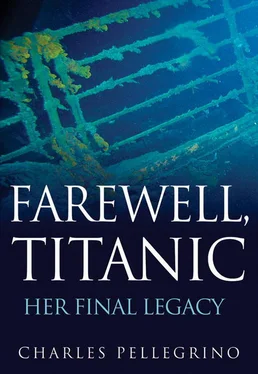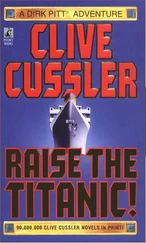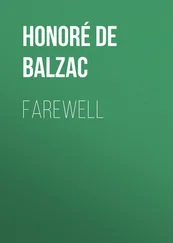My thanks for the support of Don Peterson, Victor Chan, Ed Bishop, Dee Kenealy, Doug McClean, Steve Leeper, and the families of Tsutomu Yamaguchi and Masahiro Sasaki. Thanks also to Gioia Marconi Braga, Stephen Jay Gould, Rhonda Schearer, Jay Jonas, Richard Picciotto, Eugene Rice, Richard Meo, Sean O’Malley, Paul Mallery, John Morabito, the family and friends of Paddy Brown (“This is Ladder 3, and we are still going up”), Mary Perillo, Robert Vargas, Aaron Greenstein, Paul Hoffman, “Mary Leung and the Pellegrinoids,” Robert Ballard, Tom Dettweiler, Haraldur Sigurddson, William N. Lange, Cindy van Dover, Ralph Hollis, David Sanders, John Salsig, Paul Tibbets of the WHOI Alvin crew, Stephane Pennec, Ken and Carl Olson, and Sharon Rutman. Thank you to Sharon, Tommy, Nancy, Patricia, Hannah, and the rest of the McAvinues. And, finally, my thanks and gratitude to Elaine Markson, Julia Kenny, Gary Johnson, Tom Miller, Kitt Allan, and Jorge Amaral.
Long before the first handful of iron ore was drawn from the Earth, before the gods Zeus and Osiris were named and while mammoth hunters occasionally froze to death above deposits of pre-Jurassic coal, gentle snows around the rim of Baffin Bay, near Greenland, were being compressed and forged into something horrible. The Greenland ice sheets were already ancient when Spain’s cave paintings were new. At the bases of glacial snouts, layers more than seventy thousand years old carried the scent of clay and gunflint chert, buttercups and grasses, and everything else the ice had managed to pry loose and drag away.
The end came swiftly. In no more than three months the ice shelf collapsed. Shaped by flaws and crevices that until now had lain mostly hidden, an ice block more than fifty stories deep was set free and began to move.
The iceberg did not begin its journey alone. From the maelstrom of disintegrating glaciers came an entire fleet of wandering islands, ranging from nuggets that could rest easily in the palm of a human hand to bluish-white monsters towering more than ten stories out of the water. Guided by neither compass nor rudder, they collided at random intervals, capsized, broke into pieces, and dissolved by inches as eddies brushed past their undersea ledges, tugging them into the current of the Labrador Sea, off the coast of Canada. The only escape from years of chaos was in a broad stretch of the North Atlantic that had become suddenly and incomparably quiet.
• • •
Fireman John William Thompson did not have time to think about what unseen giant had slapped the side of his bunk. At 11:40 p.m. Newfoundland Time on Sunday, April 14, 1912 (the fifth night of the Titanic ’s maiden voyage), he was lying on his back and trying to pull himself fully awake for another midnight shift at the boilers when he “felt the crash with all its force up there in the eyes of the ship.” Thompson and his friends were thrown sprawling from their double- and triple-tiered bunks. They were located on the starboard side of D deck, just ahead of the number 1 cargo hatch and the spiral stairs leading down to the boiler rooms.
On the opposite side of the bow’s forward section, and three decks lower than Thompson, leading fireman Charles Hendrickson would have slept through the crash and its aftermath if he hadn’t been jolted awake by his friend Ford. Simultaneously with the jolt to his shoulder, there came to him from the direction of the spiral stairs the bone-chilling sound of cascading water where a waterfall had no business being. Hendrickson would later describe for investigators how he rushed to the stairs just in time to see the lower deck being swallowed up by a green gush of foaming seawater; along with that deck, the passageway leading from the firemen’s quarters into the front boiler rooms was also swallowed up. In theory, at least, if the impact did not kick the tracks of the watertight doors out of line, the rapid closing of the doors should have stopped the flood from reaching beyond the submerged passageway into the boiler rooms themselves. On this night, however, what should have been and what would be were often galaxies apart.
By the time Hendrickson reached the spiral stairs, the sea appeared to be erupting through a geyser somewhere on the starboard side. Overhead, Hendrickson saw the tarpaulin beneath the number 1 cargo hatch ballooning upward like a huge dome. The surge of air pressure—which measured the pulse of water rushing in from below—whistled through the firemen’s quarters with ear-popping force.
• • •
Two levels above Hendrickson, in her bunk on E deck forward, stewardess Violet Jessop had just put aside her magazines and read a newly discovered prayer to her cabinmate, Annie Robinson. The prayer was reputed to be a safeguard translated from a scroll found in Jerusalem. Robinson commented that it was indeed a beautiful, albeit strangely worded, prayer. Just after she said this, a crash came from below, followed by a low rumble mingled with frightening undertones of ripping and crunching. The deck and the walls of the Titanic ’s servants’ quarters shivered, and the distant, normally steady vibration of the ship’s engines changed in a manner that indicated the shafts were either locking up or trying to reverse or both.
“Sounds as if something has happened,” Robinson said calmly. Jessop’s initial response was to roar with laughter.
• • •
Between Hendrickson’s and Jessop’s decks, the shudder that awakened third-class passenger Albert Moss provoked confusion but no laughter. Moss likened it to a sudden hard docking, although he knew at once that it was nothing of the sort. Like Jessop, the thirty-year-old sailor could tell from an abrupt shift in the normally steady and comforting vibrations in the deck plates that the Titanic ’s engines were operating neither steadily nor normally but were straining.
Moss supposed there was at least some small chance that he might be experiencing his second shipwreck in only four months. Last December 11, he had been second officer aboard the Harloff and Rodseth shipping line’s Hebe when a hurricane formed out of place and out of season and the old freighter began to lose steam power and to founder. Moss managed to help everyone aboard to escape alive in broken and wave-swamped lifeboats.
Now, promoted to first officer, Moss was en route to join his next ship, the Norheim , when yet another steamer seemed to make a sudden swerve toward chaos, but he was not worried. Although the Titanic did not have the Hebe ’s better ratio of seats in lifeboats to souls aboard, it was a far larger vessel, divided from stem to stern by damage-limiting watertight compartments. Whatever was happening to the Titanic , it could not possibly be as bad as the final voyage of the Hebe.
• • •
Down in the foremost boiler room (number 6), a system of watertight doors did indeed appear to have blocked the mini-tsunami that Hendrickson saw falling upon the firemen’s tunnel. A hundred feet behind Hendrickson’s position, boiler room number 6’s front bulkhead stood against the flooded tunnel like an unbreakable dam.
During the seconds before Hendrickson was awakened, another leading fireman, Fred Barrett, was standing outside the foremost boiler room’s number 10 stokehold, having already been present for the previous day’s assessment of what should have forever remained a separate and forgotten crisis involving fire damage at the bottom of a steel bulkhead.
The starboard coal bunker near stokehold number 10 had raged with fire at the base of what was about to evolve from an ordinary, redundant bulkhead to a critical safeguard separating boiler room number 6 from boiler room number 5. Hendrickson would testify later that coal bunker fires were quite uncommon in ships at sea and that in fact, during his five years with the White Star Line, which owned the Titanic , he had never even seen a coal fire prior to the one that had burned during the Titanic’ s maiden voyage. It had caused the steel to glow cherry red on the first day, April 10. The fire was not put out until the evening shift of Saturday, April 13. Hendrickson and at least three other men under Barrett’s command had been working around the clock for more than seventy-two hours to put out the fire and shovel out every block of coal—whether inert or burning—and feed it into the furnaces.
Читать дальше











